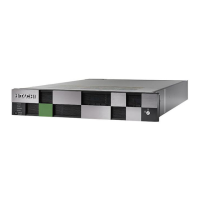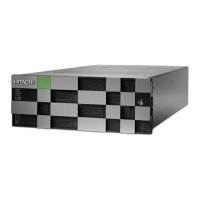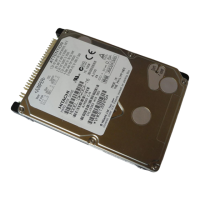- Serial number
- SSID
- Product ID
- LBA capacity (the capacity must be larger than the quorum disk
before the failure occurred)
- CVS attribute
For details about confirming this information, see the Hitachi Universal
Volume Manager User Guide.
For details about confirming the CVS attribute, see
Table 6-1
Confirming the CVS attribute on the external storage system on page
6-44.
d. Delete the LU path to the quorum disk.
e. Delete the volume that is used as the quorum disk.
f. Create a new volume.
For the LDEV ID, set the same value as the LDEV ID of the quorum
disk that has been used since before the failure occurred. If you
cannot set the same value, go to step 3.
Also set the same values for the following information as the values
that were used before the failure occurred. If you cannot set the same
value, go to step 3.
- Vendor
- Machine name
- Volume identifier 1
- Volume identifier 2 (if the information is valid)
- Serial number
- SSID
- Product ID
- LBA capacity (the capacity must be larger than the quorum disk
before the failure occurred)
- CVS attribute
For details about confirming this information, see the Hitachi Universal
Volume Manager User Guide. For details about confirming the CVS
attribute, see
Table 6-1 Confirming the CVS attribute on the external
storage system on page 6-44 and Table 6-2 Conditions for the CVS
attribute for volumes created in the external system on page 6-44.
g. Set an LU path to the new volume.
For the LU number, set the same value as the LU number of the
quorum disk that was used since before the failure occurred. If you
cannot set the same value, go to step 3.
h. Reconnect the external storage system or the quorum disk to the
primary and secondary storage systems.
2. Wait for more than 5 minutes after completing step 1, and then
resynchronize the pair.
a. Confirm that the P-VOL I/O mode is Local.
6-42
Disaster recovery of global-active device
Hitachi Virtual Storage Platform G1000 Global-Active Device User Guide

